Fly-in safari to the Masai Mara
- Bernd
- Mar 23
- 8 min read
Would you like something more?
Oloshaiki Camp, Masai Mara, Kenia
Today, I'd like to tell you about a truly extraordinary fly-in safari that I took with Pearl. It was during the chaotic year when my house on Diani Beach burned down. The story of our first fly-in safari goes like this:
2009
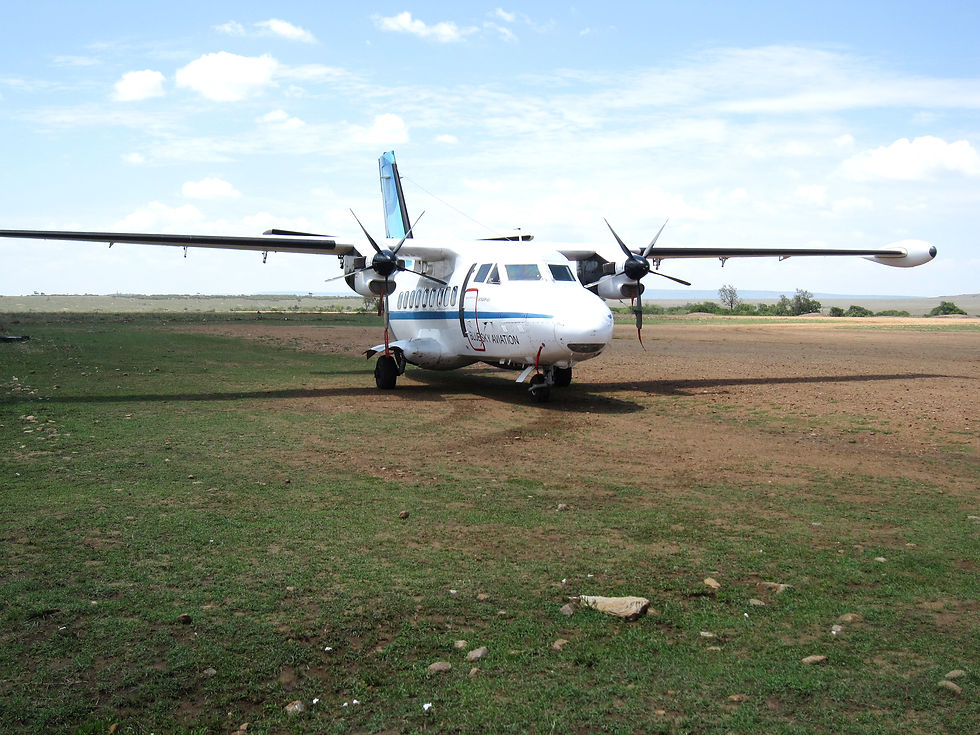
Pearl and I decide to go on a fly-in safari to the Masai Mara. From Diani and Ukunda, respectively, we fly to Oloshaiki Camp on the Talek River, which serves as our base. I brought a pair of brand-new camel boots especially for this trip. You never know if you might encounter a snake. Sturdy footwear can't hurt. Not to mention the cute insects that crawl all over the ground at night.

From the camp, we plan to explore the surrounding area on a four-day tour. Ken, our driver, is a young Maasai and picks us up directly at the airstrip. He takes us directly to the camp. It looks like we're the only two guests on this tour. Ken gives us a brief briefing on the way to the camp.
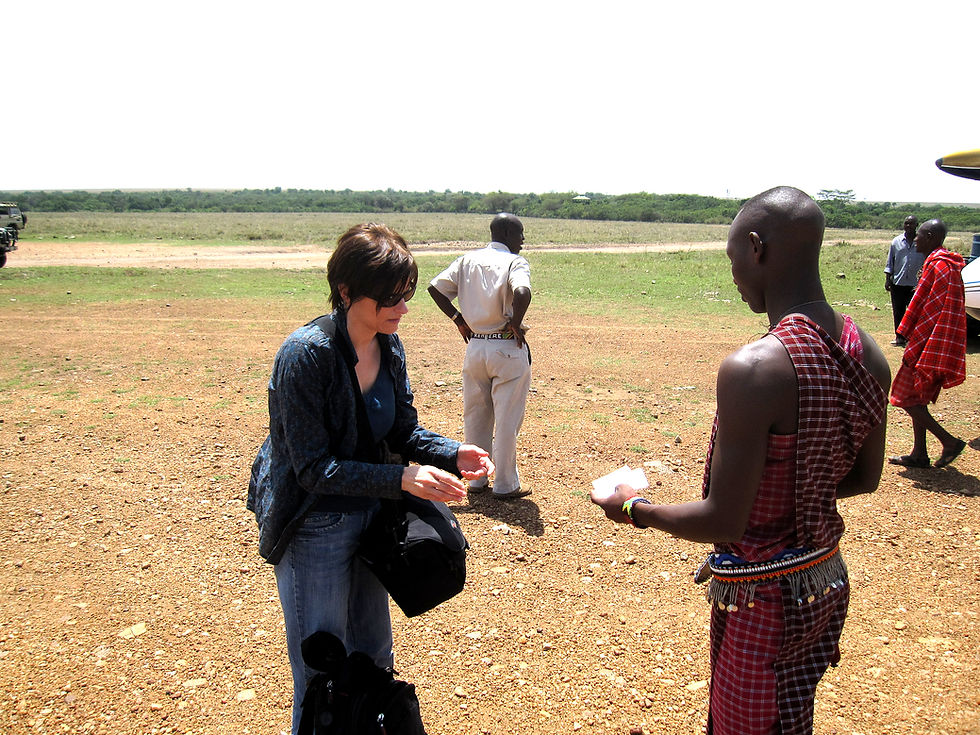
Conversation in English is unproblematic. He is somewhat unsettled, as he later told us. Not all guests are "open-minded"; many arrive already stressed, he says. They expect a maximum number of animals in a very short time. Sometimes guests lack sensitivity for the land.
You snake, you!
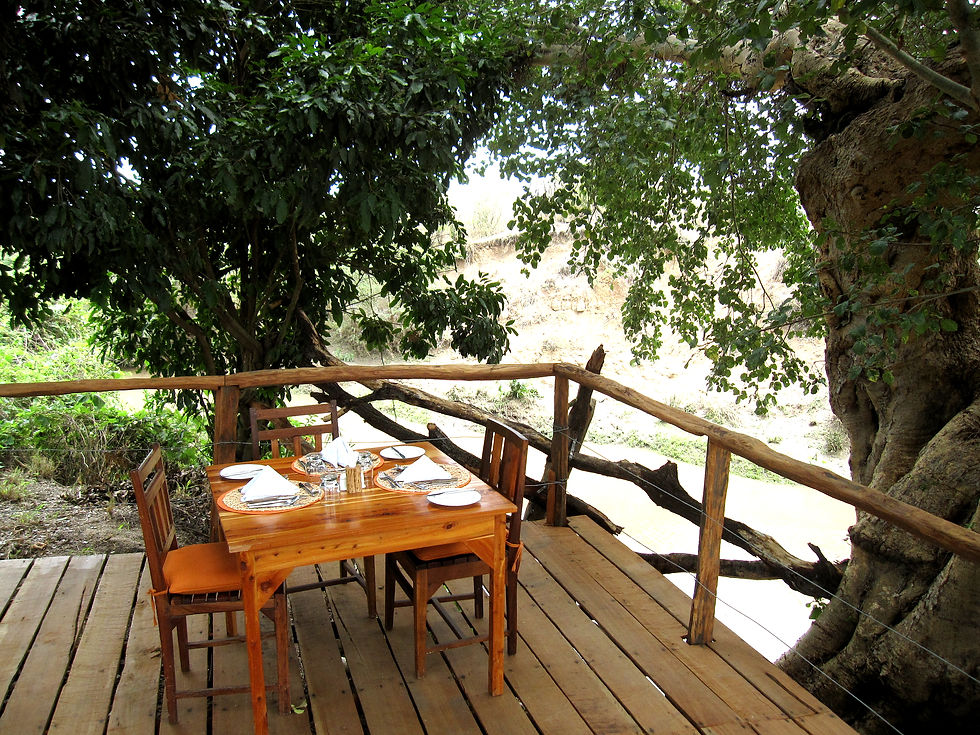
At Oloshaiki Camp, we first take a look around. Pearl and I weren't expecting so much comfort. Over lunch, under a beautiful tree overlooking the river, we follow Kent's advice to slow down. Actually unnecessary on vacation and yet most people are stressed out on a tour like this. So we start to relax.
The waiters are all very friendly and attentive. Why one of them is staring at me so conspicuously is a mystery to me at first, but soon I understand. A not-too-large, bright green snake dangles on a branch directly above my head. Another waiter joins the first one, and they both slowly approach me. Pearl is also a bit irritated.
Did we forget to pay? Only now do we realize their attention isn't on us. They quickly grab the reptile and discreetly disappear behind the building. It turns out to be a Philothamnus, also known simply as the green snake. They somewhat resemble the green mamba, for which they often pay with their lives. This safari starts well. We're excited to see what's next.
Without words

Very early the next morning, Ken picks us up from the lodge in his off-road vehicle. It's 6:00 a.m., actually still the middle of the night. "The early bird catches the storm!" he says, visibly proud in German. I have to correct him: "Wurm." "What?" "The early bird catches the worm."
"No problem!"
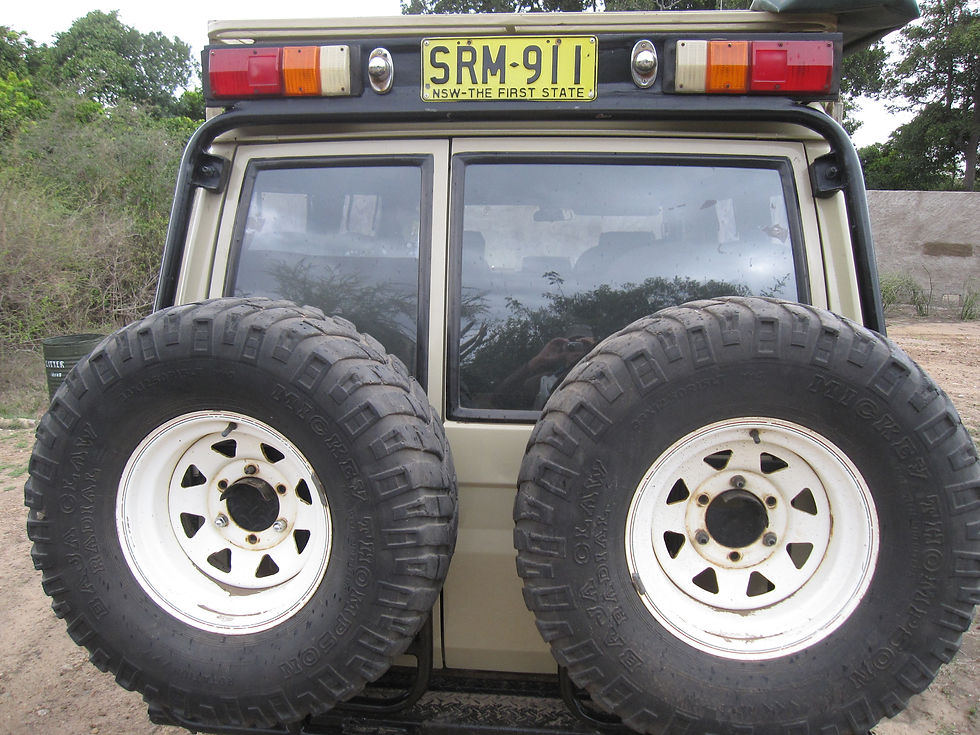
We're in luck. Pearl and I are alone for the first two days. Two more guests are scheduled to arrive the day after tomorrow. Ken is funny. Young, tall like most of his people, quick-witted, and completely familiar with this area.
The game drive is entertaining. Ken explains the situation here to us. In recent years, there hasn't been enough rain. Many of the animals have died. Thousands.
The smell of death and decay hung over the entire savannah. The Masai herds are also decimated to this day. A feast for the vultures. The Maasai's herds of cattle are in increasing competition with wild animals.
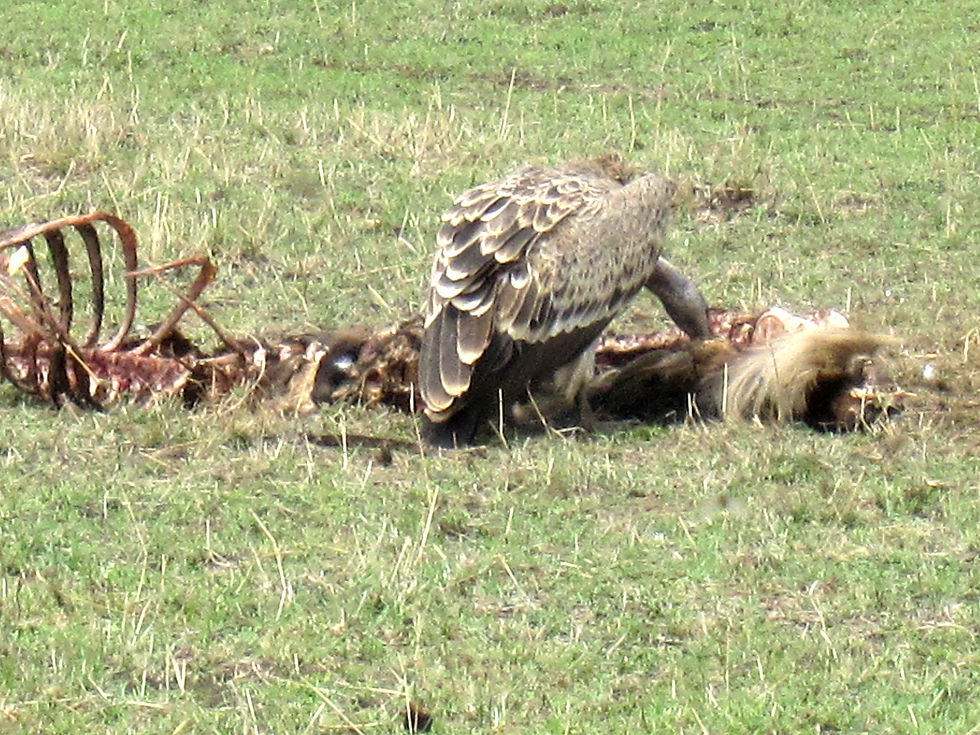
Dinner for three
We're in luck today. The weather is perfect: sun and clouds alternate this morning, creating spectacular colors amidst this magnificent landscape. Something special awaits us on this fresh morning. We'll have a late breakfast in the wilderness and do something you're not normally supposed to do: We leave the shelter of the vehicle and get out.

Ken chooses a spot under a tree and clears the table and tablecloth out of the car. Hopefully, we won't become breakfast for some big cats ourselves. What's that about the food chain again?

At least the terrain for our picnic is well chosen: flat, with a wide view. On the other hand, it wouldn't be the first time that a small group, distracted by gossip, was suddenly and unexpectedly attacked.
Life and death are siblings here in the national park. But I'm an optimist; I always see the glass as half full.
Today, every moment is a tourist highlight that lingers in our minds: experiences, moods, colors, feelings and smells that no one can take away from us.
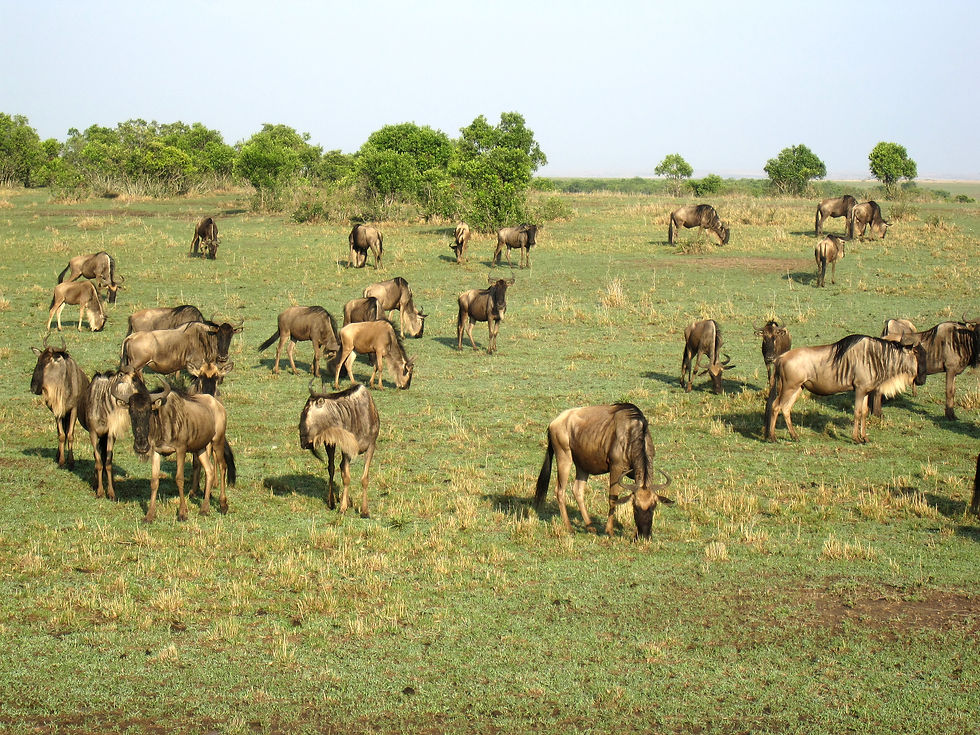
We are part of something big, far away from the Disney plastic adventure worlds. There's nothing artificial here, no endless barrage of music and noise, no intrusive entertainment, no waiting in line, no crush. Life here, in the middle of this film backdrop, is suddenly authentic.
At this moment I wish for protected areas without people. No proletarians, no academic narcissism, and no do-gooders trying to save the world over latte macchiatos in hip cafés in Berlin Mitte or elsewhere.

Speaking of latte macchiato, Pearl later tells me that my cup was a bit dusty, which Ken promptly blew out. He wiped away the stubborn residue with his hand. The coffee was still delicious.
We tell each other stories about life in our worlds, which couldn't be more different. And we remain silent, enjoying the moment. This also needs to be practiced: just keep your mouth shut.
Wild animals don't cuddle
Safaris are always an experience and extremely popular with tourists. Sometimes in our comfortable Western world we have lost our natural instinct for danger. Ken, who shares his knowledge with us, is a great asset in this regard.

Observing animals in the wild is fundamentally different from our visits to zoos. No fence limits the natural urge to freedom and to move; no mindlessness hospitalizes their dignity or degrades the animals to mere extras. Approximately 500 lions still live in the Masai Mara. They weigh a hefty 130 to 190 kg and can run up to 80 km/h over short distances.

Ken takes us to a pond almost completely overgrown with aquatic plants. A hippo peers out from the middle, staring at us with intelligent, curious eyes. But there are also some magnificent specimens on the bank. Ken is careful not to lose his distance from the animals. The ponderous hippos can run up to 30 km/h on land. Who would have thought they are among the most dangerous animals in Kenya? So keep your distance from the happy hippos.
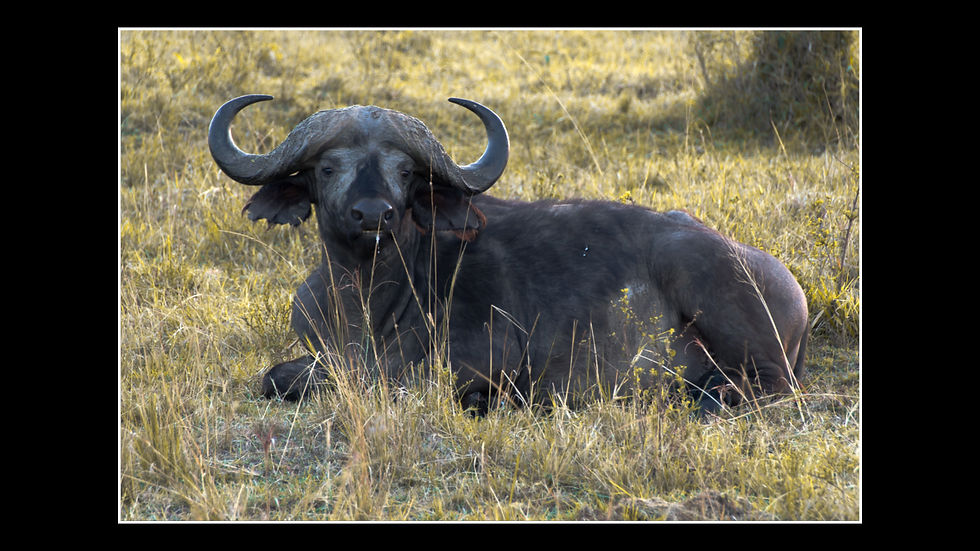
Cape buffalo are no less dangerous. They have nothing, absolutely nothing, in common with our domestic cattle. Up to 200 people die annually from Cape buffalo, which is why they are also known as the "Black Death." They reach speeds of over 50 km/h. When one buffalo attacks, others follow, and then things get really serious.
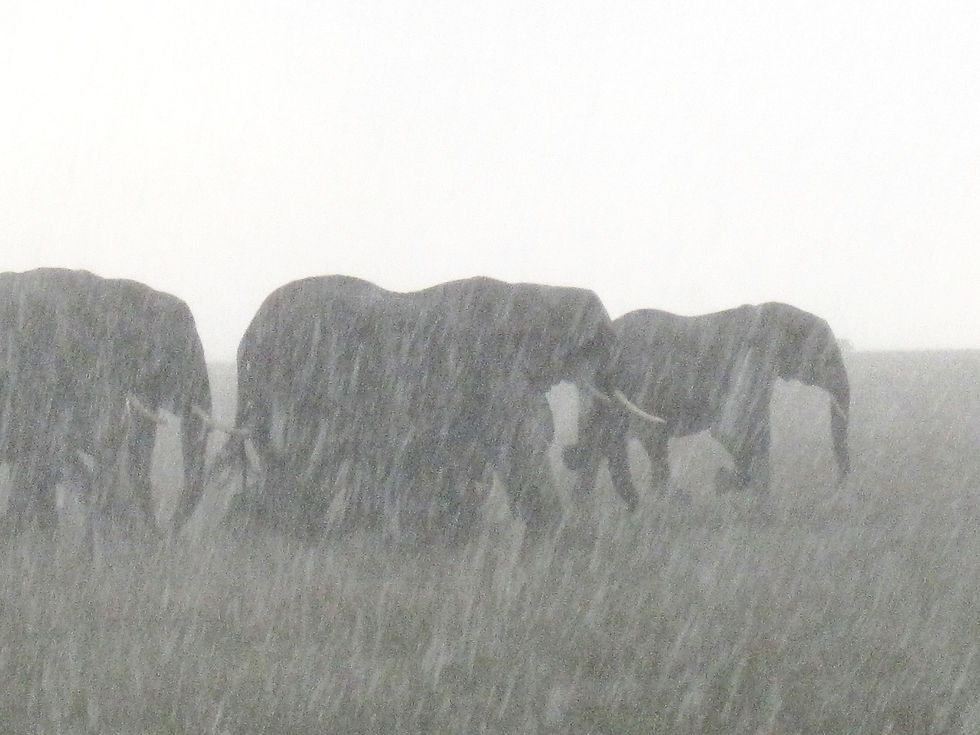
The following day, it rains cats and dogs. The torrential rain turns all the colors of the previous days into a sobering, dreary gray. The wild animals either flee to safety or endure the saving rain with stoic composure. Ken also parks the car in the middle of nowhere. We wait. In the distance, a group of elephants walks past us, letting themselves be sprinkled. Finally, some good weather after all this drought. Within a few minutes, the steppe transforms into a muddy landscape.
Important rules of conduct for a safari can also be found at:
The day the savannah swallows all the animals
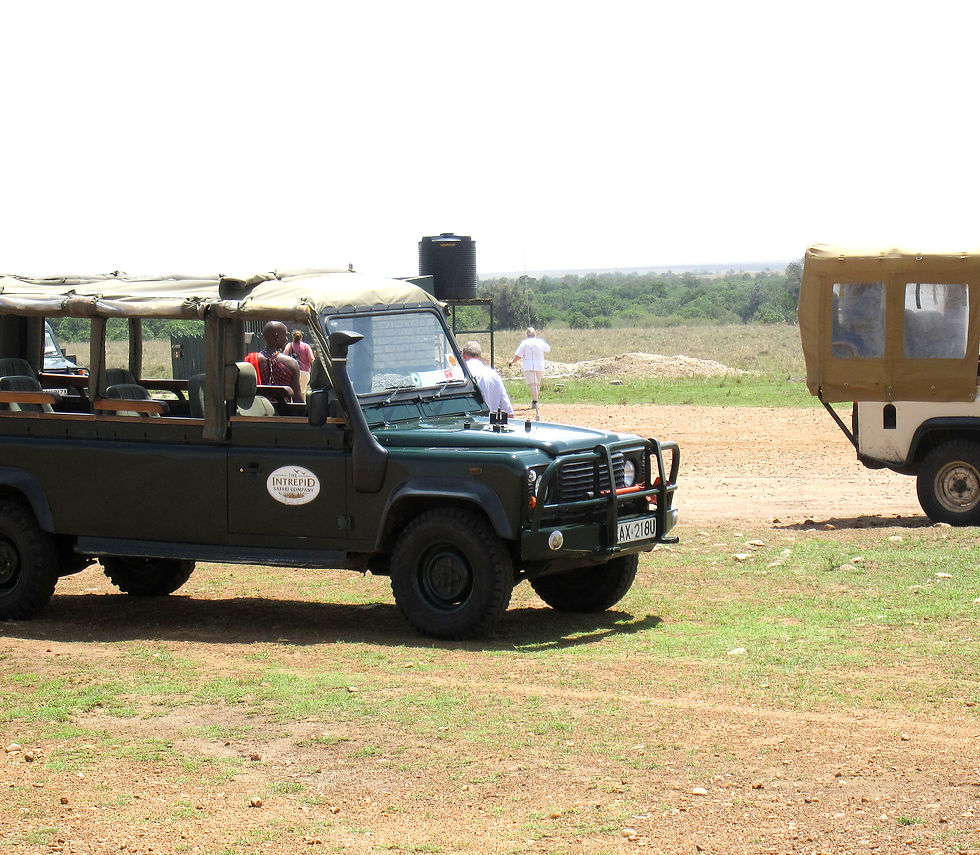
Today we have to pick up two more guests early from the bush airport. The two introduce themselves as Olga and Sergej, an entrepreneurial couple from Poland. She takes her seat in the back, he removes my backpack from the passenger seat and sits next to Ken. I forgo a discussion and join Pearl and Olga. They've booked this safari for just one day and are flying back in the evening.
We jolt for hours through a savannah drained of all its colors. Here and there, a warthog appears. But that's about it. All the animals from the previous day have disappeared as if by magic, swallowed by the earth. Sergei's mood has reached rock bottom. He wants to see animals—after all, they paid for it. An awkward silence.

Ken probably wants to please them both. There's no animal in sight. He's trying to release adrenaline in other ways. A little action can't hurt right now.
Hormone congestion
The engine roars. What is Ken doing? He hits the gas and accelerates! It looks like we're running away. But from whom? The SUV, occupied by five adults, is speeding toward a riverbank! Good heavens! Surely he's not going to make a death-defying leap toward the stream? HE WON'T DO THAT NOW! BUT THE SHORE COMES CLOSER AND CLOSER! HE'S ACCELERATING EVEN MORE! Oooooooooo!
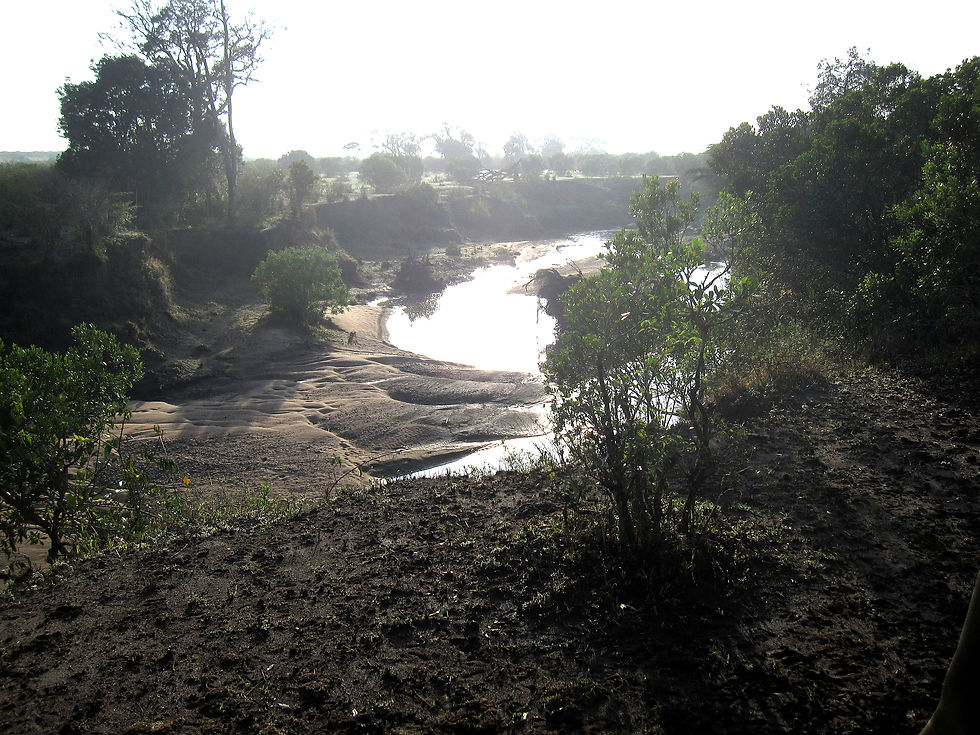
Too late: The car takes off, loaded with four astonished tourists. But the SUV doesn't fly far enough and hits the mud at the bottom of the rain-softened embankment. Ken hits the gas. He wants to end the botched maneuver at all costs and get out of the mud zone. Vain.
The front wheels spin, sinking deeper and deeper into the mud. "Stop it, Ken! No speed!" I shout. He pauses. What now? So we can't get anywhere. We are too heavy and have to expose the wheels. Sergei insists that he and his wife stay in the car; they didn't pay for this. Far too dangerous.
Pearl and I get out. Ken and I shovel the mud off the wheels. After a few minutes, Sergei gets out and carries his wife to the dry grass. They watch us together. We attach the winch to a tree. I'm standing in the brown mud called water. Now I don't even need to take off my shoes.
With combined strength, we free the vehicle. The car looks like it's been through a rally. Even the front seats are covered in mud. But Ken is visibly relieved. We climb in, and this time Sergei sits in the back with the women. He leaves the muddy seat to me. We continue our animal-free safari. But from now on, Pearl and I have Ken's goodwill.

Barefoot over insects
On this last evening in camp, we've signed up for dinner. Of course, I don't have a spare pair of shoes with me. Of course, my muddy, soaked shoes won't dry in such a short time. Of course, the leather is rock-hard and warped. The restaurant guests look at my bare feet in surprise. Maybe right now I'm setting new fashion trends for health-conscious outfits in the bush.
Something else is causing me considerably more trouble: After dark, insects crawl all over the ground. Also on the way to the restaurant tent and back again. Pearl lights my way with her flashlight. This allows me to avoid most of these cute little creatures, but not all of them, which is admittedly pretty disgusting. All in all, a successful day.
The return of colors
Our farewell to Ken the next day is warm. I tell him his car could use a thorough cleaning. He counters that walking barefoot through Africa isn't really advisable. Humor is the best of all currencies.
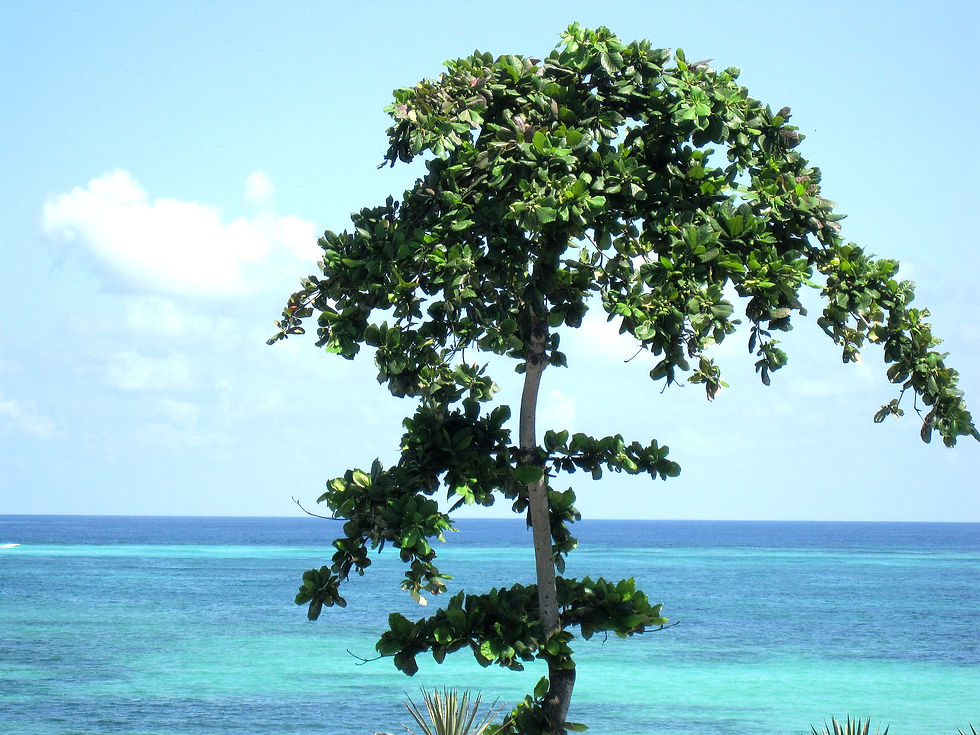
Back at Diani Beach, Pearl and I walk along the beach. The sea glows in the most beautiful colors. We look back on these eventful and insightful days. Nothing can be forced, no amount of money in the world guarantees the fulfillment of all your dreams. Especially not without slowing down a few gears.
Africa, at least outside the metropolises of the Black Continent, operates on a different rhythm. There's strength in calm. Pole-pole, as the Kenyans say.
And so, with a glass of red wine, we watch the sun sink spectacularly over the horizon. Before night covers the land, it bathes the sky in bright, warm colors. We gratefully welcome it into our hearts.
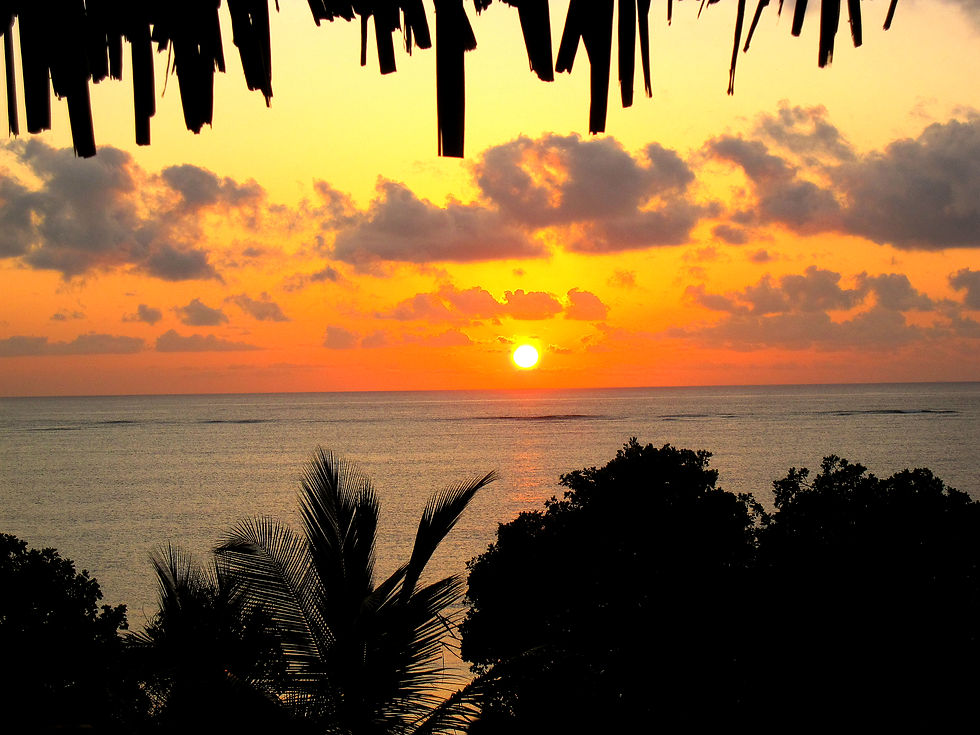
Link to Villa Massai
My accommodation: airbnb.de/h/villamassai-diani-galu-beach




Comments